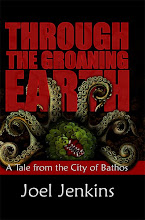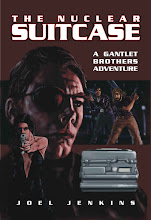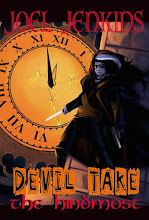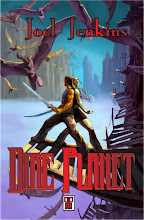
A little while back a short story by author Josh Reynolds, in which he incorporates such real life and fictional characters as Theodore Roosevelt, Mark Twain, and Dr. Jekyll and Mr. Hyde (among others) got me to wondering how someone who was not familiar with those characters or historical figures would perceive the story.
This question was of particular interest to me because I recently wrote a story in which the historical Wyatt Earp encounters my fictional character, Lone Crow, and they spend some time encountering strange secrets beneath the freezing Alaskan tundra.
In pondering Josh Reynold's Mr. Brass and the Crimson Skies of Kansas I think that he is able to pull off the use of real historical figures and public domain fictional characters because he is able to imbue them with enough personality that we get to know the character, whether or not we were ever familiar with them in the first place. Being familiar with them is just a layer of icing on his literary confection.
I was able to contrast Reynold's work with the first couple chapters of a short novel, The Eldritch New Adventures of Becky Sharp, in which the main character is derived from a literary work I am unfamiliar with--namely, William Makepeace Thackeray’s 1947 novel, Vanity Fair. The author is able to effectively illustrate Sharp's character, but he quickly maneuvers her into an encounter with She--the title character of an H Rider Haggard novel written around the turn of the century (not this century but the one previous).
Now, I had previously read this particular Haggard novel, but it had been a few years--so though I recognized the character, I realized that this new author who had appropriated She was relying (either purposely or accidentally) on the reader's knowledge of the character to serve as a kind of shorthand to fill in She's characteristics. Even though I had some knowledge of the character, I didn't feel like the insertion of She worked within the story, because She was only vaguely drawn in this particular novel.
The Eldritch New Adventures of Becky Sharp is full of borrowed literary characters and is getting great reviews elsewhere, but I suspect that in this case a strong familiarity with those borrowed literary characters is required for a full enjoyment of the novel.
The summation of my ponderings on borrowing characters from history and public domain is that the author needs to be careful to draw the character into full life and not depend upon the reader's previous knowledge of the character. If the author can pull it off it adds an extra bit of spice in the story, but if the author fails to flesh out the borrowed characters the informed reader is left bored and the uninformed reader mystified.




















2 comments:
Hi Joel. Good review, although I'd argue your contention that any reader would be bored with this story. Regardless of their familiarity with all the characters, Harris never stints on the action and it propels the narrative smoothly. I do grant you, more time fleshing out some of the public domain figures would have been nice.
Hi Ron, My posting wasn't intended to be so much a review of The Eldritch Adventures of Becky Sharp, but in reading the preview chapters it helped solidify some answers to questions I had about introducing public domain and historical figures into a work of fiction.
I think Mr. Harris has a fantastic story concept and obviously a great familiarity with a wide array of fictional characters. He does a nice job of fleshing out the character of Becky Sharp in the first two chapters, so it is quite possible he does likewise with some of the other public domain characters Becky encounters in later chapters.
Post a Comment